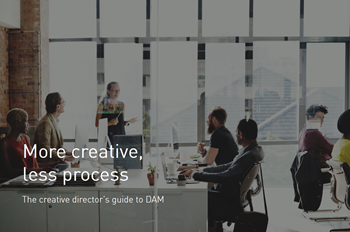It's no big surprise that CRM is such an integral part of modern companies, as consumers increasingly prioritize organizations that offer more than just a good deal.
But many brands aren't making the most of the valuable resource and thereby running the risk of losing out to competitors who deliver a better standard of service for consumers thanks to their winning CRM strategy.
But do you know how to build a successful CRM strategy that will work for all your personas, and that all employees will be able to deliver?
Align with organizational goals
In order for a CRM strategy to be effective, it needs to complement the business goals and this should be the most important factor when trying to define any strategy; you can then identify the ways CRM can help you achieve these wider company goals. This will provide the foundation for the CRM strategy and give it a clear direction.
Personalize your approach
Although it may go against everything you believe, not every customer is created equal and they're not all worth the same amount of value to the organization. For example, returning customers often spend much more than first-time consumers.
However, in order to get people to this stage in the buyer cycle, you need to make it clear that you understand and value their custom. CRM is the best way of establishing this, right from the start. Ensuring it is personalized around each of your key personas will help you understand the pain points and motivations of clients.
Understand your consumer
Data-driven marketing is an important element of most campaigns and, therefore, crucial for any CRM strategy. This is because the more you know about your consumers, their journey and how they interact with your brand, the better you can tailor your services to meet their demands. So tracking the activity of any visitors to your website is an effective way of understanding the behavior of people interacting with your brand, and help you adapt your CRM plan accordingly.
Communicate to everyone in the business
Whether they are involved in client-facing roles or not, it's important that everyone within the business is aware of their CRM strategy and how it impacts the organizational goals. The software you use will be responsible for collecting data about your consumers but this will only work if employees are able to understand what it means and interpret it in line with the business objectives.
Employees should be involved in the process of developing CRM strategies, not only does this help get the best insight from all levels within a company, it also gets them invested in the approach from the beginning.
Ensure it's a process not a task
What’s the difference between a process and a task? One is constantly evolving, being analyzed and adapted to improve itself, while the other is something that needs to be completed before it can work its magic. You want your CRM strategy to be the former not the latter. It's important that you re-evaluate your approach at regular intervals, especially after a particularly good - or bad - period for the business. Poor sales quarters can often tell you more about how to improve your CRM and business strategy than a good one.
Further reading:
- 5 Best Practices to Optimize Your CRM
- Measure Your CRM Success with These 7 Metrics
- How to Automate Your Marketing With a CRM System
Access the latest business knowledge in Marketing
Get Access






Comments
Join the conversation...